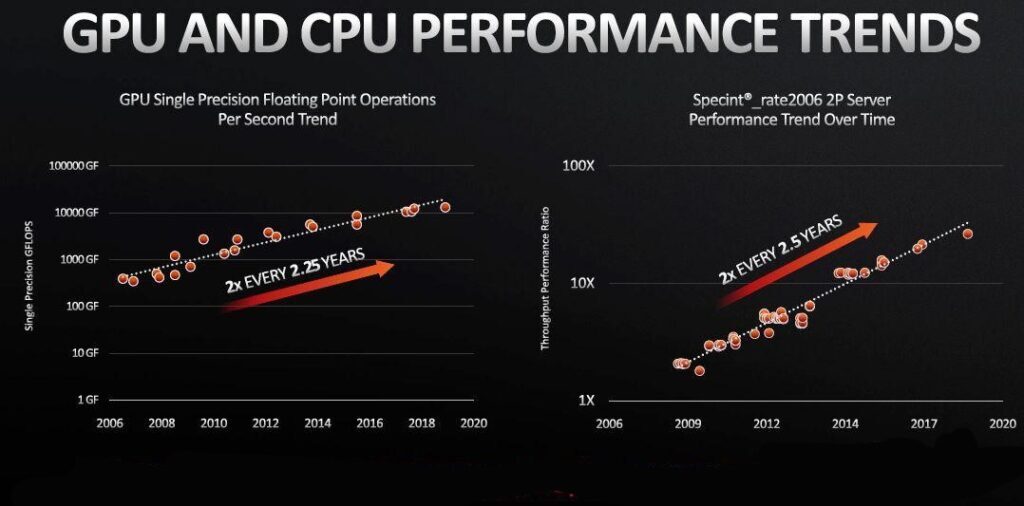When it comes to the world of chess engines, one question frequently arises: should you use a CPU or GPU to run the engine? Chess engines, like Stockfish and Lc0, have changed how we understand and play chess, offering powerful analysis and training tools.
But as the complexity of these engines has grown, so too has the demand for computational power. CPUs (Central Processing Units) and GPUs (Graphics Processing Units) each have distinct strengths and weaknesses, but which one is best suited for running a chess engine?
In this article, we’ll explore the core differences between CPUs and GPUs, explain how each impacts the performance of chess engines, and provide detailed guidance on which hardware solution may be the best for your specific needs.
1. Understanding the CPU and GPU: Core Differences:
CPU: The Generalist Workhorse
A common term for the CPU is the “brain” of the computer. It excels at handling a wide variety of tasks that require sequential processing. Most CPUs have fewer cores (typically 4 to 16) but each core is extremely powerful, optimized for tasks that require significant computational effort. Chess engines such as Stockfish were originally designed to run on CPUs because chess analysis involves deep, sequential computations that benefit from the architecture of a CPU.
The key advantage of a CPU lies in its versatility. CPUs are ideal for handling single-threaded tasks that demand a high level of complexity and accuracy. In chess analysis, this means that Stockfish can search deep into specific lines, calculate positions efficiently, and provide precise evaluations.
GPU: The Parallel Processing Powerhouse:
The GPU, on the other hand, is made for parallel processing.Originally developed to accelerate the rendering of 3D graphics in video games, GPUs have a large number of cores (often thousands), allowing them to perform many calculations simultaneously. This architecture makes GPUs extremely powerful when tasks can be broken down into smaller, parallelizable pieces.
Modern neural-network-based chess engines, such as Leela Chess Zero (Lc0), take advantage of this parallel architecture. Unlike traditional engines that rely on brute-force searching through moves, Lc0 uses deep learning techniques that mimic the way humans approach chess. These models involve matrix operations, which GPUs can handle much more efficiently than CPUs due to their parallelism.
2. CPU vs. GPU Performance in Chess Engines:
Stockfish and CPU Performance:
Stockfish, one of the strongest and most widely used chess engines, runs primarily on CPUs. It relies on brute-force search algorithms and heuristics like alpha-beta pruning to analyze vast amounts of chess positions quickly. Stockfish’s performance is largely tied to how fast the CPU can search through possible moves and evaluate positions. The faster the CPU clock speed and the more cores available, the quicker Stockfish can compute its evaluations.

Because of its reliance on brute-force calculation, Stockfish benefits greatly from multi-core CPUs. Higher-end CPUs with 8, 16, or even 32 cores can significantly speed up the search process, enabling Stockfish to explore deeper into complex positions. For users who prioritize traditional chess analysis and depth of calculation, investing in a powerful CPU will result in maximum performance gains.
Lc0 and GPU Performance:
On the other hand, Leela Chess Zero (Lc0), a neural network-based engine, was specifically designed to run on GPUs. Lc0’s strength comes from its ability to evaluate positions based on learned patterns from millions of chess games. Unlike Stockfish, Lc0 doesn’t rely on brute-force searching; instead, it uses deep learning to predict the best move based on intuition, much like a human grandmaster.
The neural networks that power Lc0 require intense matrix calculations, which are much faster on a GPU than on a CPU. A high-end GPU can handle thousands of parallel operations simultaneously, which allows Lc0 to evaluate positions much faster than if it were run on a CPU. For users running Lc0, having a strong GPU is critical to achieving peak performance.
3. Cost Efficiency: CPU or GPU?
CPU: A More Affordable Option:
For chess enthusiasts and players who primarily rely on Stockfish or other traditional engines, a powerful CPU is generally more cost-effective. Modern CPUs with high core counts and fast clock speeds are more affordable than high-end GPUs. Additionally, Stockfish’s reliance on CPUs means that you don’t necessarily need to invest in a top-tier graphics card. A mid-range or high-end CPU will give you plenty of computational power for high-level chess analysis.
GPU: A Costlier Investment:
If you intend to run Lc0 or other neural network-based engines, a GPU becomes essential. However, high-end GPUs are typically more expensive than CPUs. For instance, popular GPUs like the NVIDIA RTX series or the AMD Radeon series are priced at a premium, but they are necessary to achieve optimal performance in engines like Lc0.
It’s also worth noting that for Lc0, the performance scales with the quality of the GPU. A top-tier GPU like the NVIDIA RTX 4090 will outperform a mid-range option, providing faster evaluations and deeper analysis. If you’re serious about using Lc0 at its full potential, be prepared to invest in a powerful graphics card.
4. Scalability and Future-Proofing:
CPU for Long-Term Versatility:
CPUs offer greater versatility and can handle a wide range of tasks beyond running chess engines. If your primary focus isn’t purely chess analysis, a powerful CPU is an excellent long-term investment. Whether you’re gaming, performing video editing, or running machine learning algorithms, a high-end CPU will provide the processing power needed for a variety of tasks. Additionally, CPUs tend to age more gracefully than GPUs, making them a safer choice for long-term use.

GPU for Specific Chess Tasks:
GPUs, on the other hand, excel in specialized tasks like deep learning and parallel computing. If you’re heavily invested in Lc0 or similar engines, a high-performance GPU will be indispensable. However, GPUs are prone to quicker obsolescence compared to CPUs, especially as newer and faster models are released regularly. Still, for tasks that benefit from parallel computing, such as running neural networks or rendering high-end graphics, a GPU is an essential tool.
5. Conclusion: Which is Better for Chess Engines?
Choosing between a CPU or GPU for running a chess engine depends largely on which engine you prioritize and your specific needs.
- If you rely heavily on Stockfish or other traditional engines that benefit from deep, brute-force analysis, a powerful multi-core CPU is your best option. CPUs are cost-effective, versatile, and well-suited for sequential computations.
- If you prefer using Lc0 or are interested in exploring deep learning-based engines, investing in a high-end GPU will provide the parallel processing power needed to get the most out of these engines. Although more expensive, GPUs significantly enhance the performance of neural-network chess engines.
Ultimately, the choice between CPU and GPU comes down to your budget, goals, and the type of chess analysis you need. For many, a combination of both—a strong CPU with a dedicated GPU—can offer the best of both worlds, enabling you to run different types of chess engines at optimal performance.
FAQs: CPU vs. GPU for Chess Engine
1. What is the main difference between a CPU and a GPU for running a chess engine?
The CPU (Central Processing Unit) is designed for sequential processing and excels at tasks that require complex, single-threaded computations. It’s the best choice for engines like Stockfish, which rely on deep, brute-force search algorithms. A GPU (Graphics Processing Unit), on the other hand, is designed for parallel processing and works best with tasks that can be divided into smaller, concurrent operations. Engines like Lc0 (Leela Chess Zero) benefit from GPUs, as they rely on neural networks that are highly parallelizable.
2. Which chess engine works better with a CPU?
Stockfish, one of the most powerful traditional chess engines, is optimized to run on CPUs. Its algorithms, such as alpha-beta pruning, rely heavily on the CPU’s ability to process sequential tasks efficiently. Multi-core CPUs with high clock speeds can significantly improve Stockfish’s search depth and evaluation speed.
3. Which chess engine is better suited for a GPU?
Leela Chess Zero (Lc0) is designed to run on GPUs. Lc0 uses deep neural networks and requires parallel processing power to compute its evaluations efficiently. A high-performance GPU enables Lc0 to analyze chess positions faster by leveraging its many cores to handle complex matrix calculations inherent in deep learning models.
4. Can I use a CPU for Lc0 or a GPU for Stockfish?
Yes, you can run Lc0 on a CPU, but it will be much slower compared to running it on a GPU due to the CPU’s limited ability to handle parallel computations. Similarly, Stockfish can run on a GPU, but it won’t see significant performance improvements because Stockfish’s search algorithm is optimized for CPUs. Each engine is best suited to its respective hardware.
5. Which is more cost-effective for running a chess engine, a CPU or a GPU?
For most users running traditional engines like Stockfish, a high-performance CPU is more cost-effective, as CPUs tend to be less expensive than high-end GPUs. If you plan to use Lc0, however, a GPU is essential, and high-end GPUs (like the NVIDIA RTX series) tend to be pricier. Ultimately, the cost depends on the engine you plan to use and your budget.
6. Can I run both Stockfish and Lc0 simultaneously?
Yes, you can run both Stockfish and Lc0 on the same system, provided you have a powerful enough CPU and GPU. Many advanced setups involve using a multi-core CPU to run Stockfish alongside a dedicated GPU for Lc0. This allows users to switch between engines or run both concurrently for different analysis needs.
7. Do neural-network chess engines like Lc0 require constant updates for optimal performance?
Yes, neural-network engines like Lc0 are often updated with new weights and model improvements based on training data from millions of games. These updates enhance performance, and a high-quality GPU ensures that you can run the latest versions of Lc0 at maximum efficiency.
8. Is a CPU-only setup sufficient for chess engine analysis?
For most users running traditional engines like Stockfish, a CPU-only setup is more than sufficient. A multi-core CPU with a high clock speed will give you fast and deep analysis. However, if you want to use modern neural-network-based engines like Lc0, a GPU is essential for efficient performance.
9. How does a multi-core CPU improve the performance of chess engines like Stockfish?
Stockfish can take advantage of multi-core CPUs by running multiple search threads simultaneously. Each core can evaluate different parts of the chess position, allowing for faster and deeper analysis. A CPU with more cores allows Stockfish to explore a larger number of possible moves in a shorter amount of time, resulting in improved evaluation accuracy.












